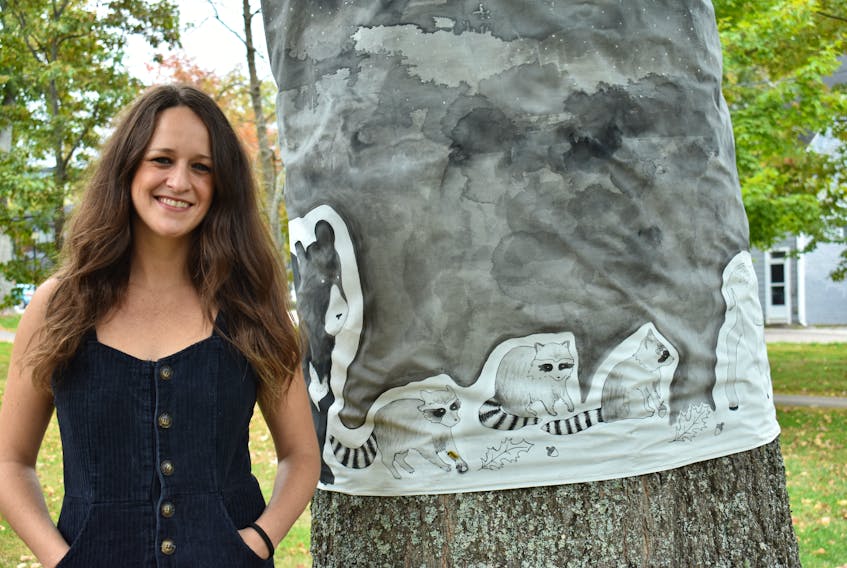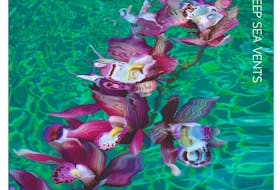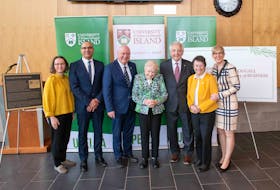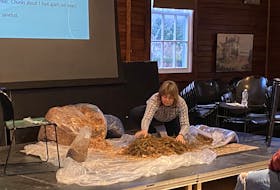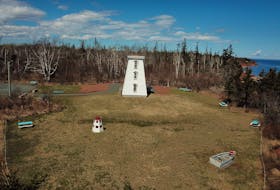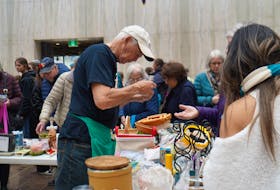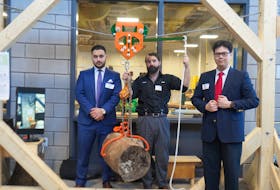CHARLOTTETOWN, P.E.I. — Ashley Anne Clark conjured images of animals who once thrived but no longer exist in Prince Edward Island as part of a City of Charlottetown showcase linking art and nature.
Rooted in Art, running from Oct. 3 to 17, showcases five Island artists as part of a new tree appreciation initiative from the city’s environment and sustainability department.
Announced in September as part of National Forest Week, it features a 2.5-kilometre, self-guided tour around downtown Charlottetown, where participants can find an interpretive panel with information about each tree, as well as the artist whose work is featured on the tree.

The event will also help people appreciate some of the smaller green spaces around the city that are easy to take for granted, said artist Clark, who used to live near Rochford Square and the tree her artwork will adorn until Oct. 17.
“This is just another way to learn a little bit more about the trees you pass every day on your way to work or whatnot.”
Clark researched her tree and Island animals before settling on her design. The tree, a red oak, is known for its abundance of acorns, so she decided to feature different animals that use acorns as a source of energy and food, like squirrels and raccoons.
She also included black bears and white-tailed deer, which are no longer present on P.E.I.
“And I like to think when this tree first was sprouting they were still around, so I kind of titled my piece Animal Ghosts to represent all the different lives that one tree can affect in its lifespan,” she said.

The artists:
Ashley Anne Clark
- Born in P.E.I., she’s a multidisciplinary artist working with themes of wilderness, animal life and the raw elements of nature.
Nancy Cole
- A Schurmans Point based textile artist, her work bridges visual arts, textile arts, installation, performance, and new media.
Monica Lacey
- Current executive director for This Town Is Small Inc., she is a multidisciplinary artist in pursuit of beauty, with a passion for nature, connection, communication and exploration.

Melissa Peter-Paul
- A Mi’kmaw artist from Abegweit First Nation on Epekwitk (P.E.I.). She is heavily influenced by 20th century Mi’kmaw quillwork and she is supported in her harvesting efforts by her family.

Jane Whitten
- A basket-maker and knitter presently living in Summerside, PEI. Born in Australia, she has spent much of her adult life in Atlantic Canada establishing her craft practice while also pursuing her career as a special education consultant until her recent retirement.
Making a connection
Basket-maker and knitter Jane Whitten’s work in Connaught Square is also about the passing of time.
Each of the artist's knitted root systems are made from different types of wool — homespun, mass-produced acrylic and a newer type that’s a tube of knitted cotton with recycled fibres from plastic bottles — which reflect trends in society and environmental decision-making.

It’s a great initiative to get people out of the house in a socially distant way and thinking about something other than the pandemic, said Whitten.
“It’s just bringing awareness to the trees themselves; it’s increasing the visibility of art in the community and it’s connecting people to that art.," she said.
"And I think also, in this case, it’s going to be encouraging people to go for a walk and getting out.”

Starting conversations
Already some of the art has been generating conversation, as Whitten spent parts of Friday talking with passersby while she and her daughter set up the roots.
One man from a nearby apartment building came out, chatted with her, then went back inside to grab his partner and iPad; another person told her they looked so natural they already couldn’t picture the trees without them, said Whitten.
“It was really fun because it meant the community was starting to get connected with the pieces that were there.”

Clark hopes people taking a second to stop, read the sign and look at the art will generate more conversation and get people to see the hidden lives of trees.
“I think often we see them and they seem dead or something because they’re so still, but they’re constantly interacting with each other.”
The trees:
Rochford Square
- Latin name: Quercus rubra; Common name: Red oak
P.E.I.’s provincial tree, it features on the provincial flag. The trunk is approximately 82 cm. It produces nutrient-rich acorns, which are a popular food for birds and mammals. Acorns once served as a food source for humans as well.
Victoria Park
- Latin name: Tilia cordata; Common name: Littleleaf linden
This tree is considered a heritage tree in the city since its diameter is over 100 cm, which means it has special protection from possible harm through the city’s Tree Protection Bylaw. A heritage tree is a tree on private or public property and is over 100 cm in diameter at breast height and is one of five species (Linden sp, American elm, red oak, red maple and sugar maple).

Corner of Grafton and Rochford streets
- Latin Name: Ulmus americana; Common name: American elm
One of Charlottetown’s most iconic trees. Every year, it absorbs over 1,100 pounds of carbon, saves 330 kWh in energy use and diverts over 30,000 litres of storm water from rushing into the city’s storm water infrastructure and overwhelming it.

Connaught Square
- Latin Name: Acer platanoides; Common name: Norway maple
Considered an invasive species, it was brought from Europe as a shade tree for parks, streets and yards. - Latin name: Fraxinus americana; Common name: White ash
Features compound leaves, where each leaf attached to the branch is made up of multiple leaflets. It gets its name from the whitish underside of its leaves. - Latin name: Ulmus americana; Common name: American elm
Native to P.E.I., some elms have been lost in recent years due to Dutch elm disease (DED). New elm trees planted in Charlottetown are DED resistant.

Prince Street
- Latin name: Betula pendula; Common name: Weeping birch
While similar to a native P.E.I. birch tree, it’s a unique, ornamental variety, which gets its name from its weeping branches. Birch trees have been used to make woven shoes, canoes, containers, kitchen utensils and skis. Its sap can also be used to make a syrup, similar to maple syrup.

